Have a Turtle Encounter in Fiji!
It’s no secret that turtles face a number of threats in the ocean today, so seeing them on your tropical holiday is a rare encounter. Hawksbill, green and leatherback turtles are the main turtle species in Fiji, nesting on beaches from November to March. While you might be lucky to spot one while snorkelling or scuba diving, visitors to Fiji have a better chance of seeing these beautiful animals at a resort with a turtle conservation program. Learn about such resorts in the list below to find out the best places to see and swim with turtles in Fiji!
For more wildlife encounters, be sure to bookmark Where to See Wildlife in Fiji.
Table of Contents
1. Turtle Alley (Kadavu)
Turtle Alley is undoubtedly one of the best places in Fiji to witness magnificent sea turtles in their natural habitat. Accessible through the Matava Eco Adventure Resort, this renowned dive site off Kadavu‘s coast is a marine lover’s dream come true. You’ll be amazed by the graceful turtles gliding through crystal-clear waters, often accompanied by majestic sharks. The vibrant coral gardens teeming with tropical fish create a kaleidoscope of colours beneath the surface, making every dive a truly unforgettable experience. For more aquatic adventures in the area, check out our guide to the 10 Best Dive & Snorkel Sites on the Great Astrolabe Reef.
Location: Great Astrolabe Reef, Kadavu, Kadavu Group. Accessible via boat from Matava Eco Adventure Resort.
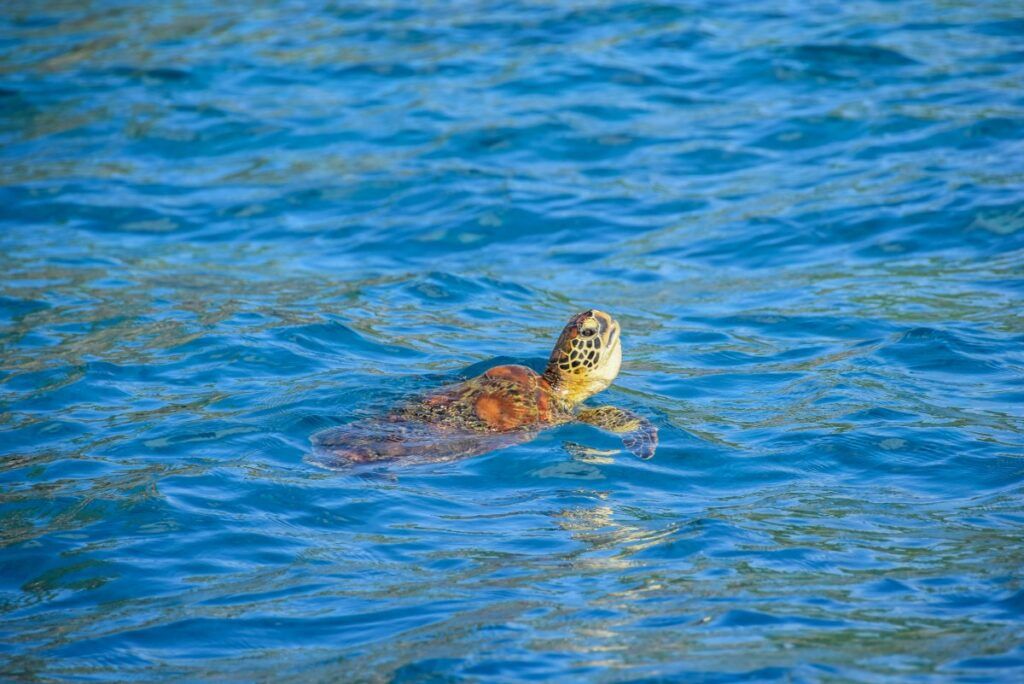 © FijiPocketGuide.com
© FijiPocketGuide.com2. Turtle Island Fiji (Yasawa Islands)
The private all-inclusive island resort in the Yasawa Islands protects its namesake with a vigorous turtle conservation program. Not only does Turtle Island Fiji rear turtles to be released into the ocean, but it also has its own turtle-tagging program in partnership with the WWF. With only a few guests at this adults-only boutique resort, it’s not a problem to request learning more about their conservation efforts, and if the timing is right, you may even get to witness a turtle being released back into the wild.
Location: Turtle Island, the central region of the Yasawa Islands.
 © FijiPocketGuide.com
© FijiPocketGuide.com3. Nakelo Treasure Island Resort (Mamanuca Islands)
One of the first resorts in the Mamanuca Islands to employ a full-time environmental officer, Nakelo Treasure Island Resort has been invested in protecting their island’s population of hawksbill turtles for more than 40 years. Their “Hawksbill Turtle Conservation Program” releases hundreds of turtles back into the wild each year. For guests, this means turtle feeding displays, watching baby turtle releases and more! Plus, foraging for turtle food and helping out with turtle conservation is also part of the kids’ club activities.
Location: Treasure Island, the eastern region of the Mamanuca Islands.
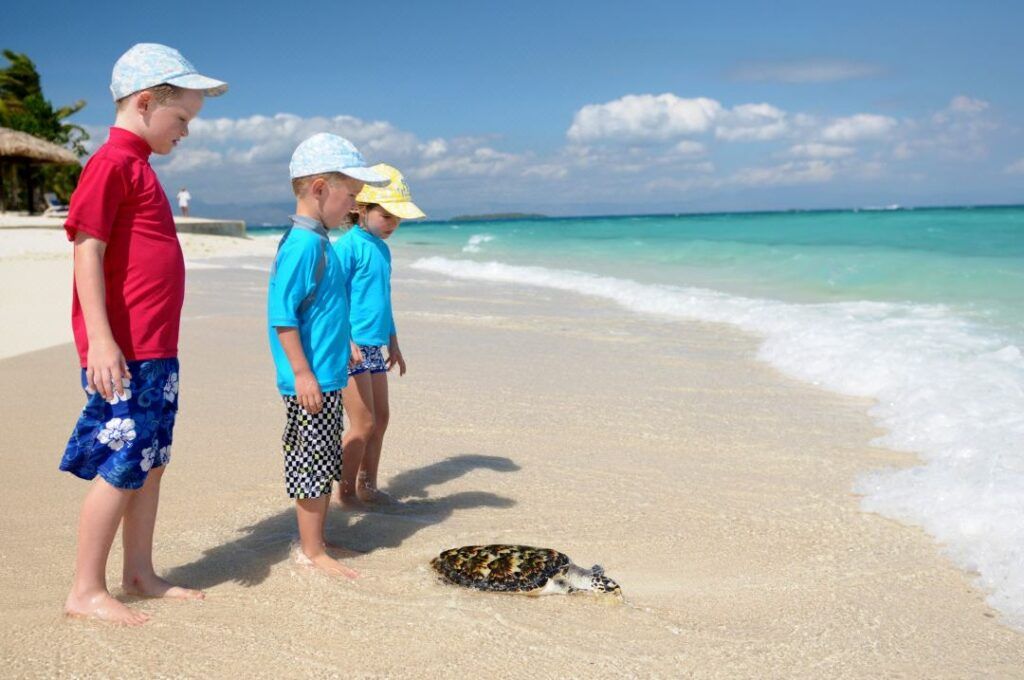 © Treasure Island Resort
© Treasure Island Resort4. Kula WILD Adventure Park (Coral Coast)
At Kula WILD Adventure Park, you can get up close and personal with Fiji’s fascinating wildlife. The “Behind-the-Scenes Tour” is a must for turtle enthusiasts, offering insights from a marine biologist about Fiji’s turtle conservation efforts. If you prefer a more relaxed visit, the regular admission still allows you to hand-feed these gentle creatures. The park boasts scenic nature walks and aviaries housing Fiji’s colourful and rare birds, many of which are featured in our guide to 15 Animals & Birds Unique to Fiji. Don’t miss the chance to hold an iguana – a truly unique experience! (Just don’t expect it to be as cuddly as a koala).
Location: Queens Road, Korotogo, Coral Coast, Viti Levu. About 1 hour 30 minutes drive from Nadi.
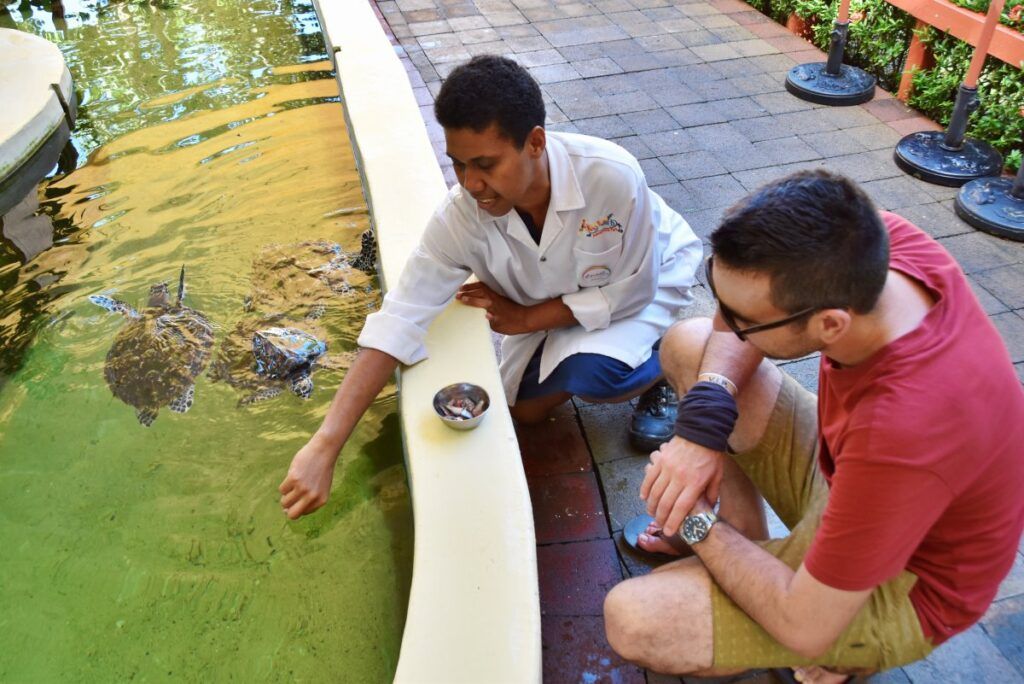 © FijiPocketGuide.com
© FijiPocketGuide.com5. Nakelo Treasure Island Resort (Mamanuca Islands)
One of the first resorts in the Mamanuca Islands to employ a full-time environmental officer, Nakelo Treasure Island Resort has been invested in protecting their island’s population of hawksbill turtles for more than 40 years. Their “Hawksbill Turtle Conservation Program” releases hundreds of turtles back into the wild each year. For guests, this means turtle feeding displays, watching baby turtle releases and more! Plus, foraging for turtle food and helping out with turtle conservation is also part of the kids’ club activities.
Location: Treasure Island, the eastern region of the Mamanuca Islands.
 © Treasure Island Resort
© Treasure Island Resort6. Beachcomber Island Resort (Mamanuca Islands)
A popular go-to for day trips from Denarau and the Anchorage Beach Resort, Beachcomber Island Resort offers a wealth of activities including the chance to see turtles in their turtle pool. You can also stay on the island in one of the affordable dorm rooms or bures. Additionally, conservation holiday programs, such as VESA, work with the resort to organise turtle and conservation programs giving you maximum wildlife interaction. Learn more about the resort in the 20 Best Budget Resorts in Fiji.
Location: Beachcomber Island, the eastern region of the Mamanuca Islands.
 © FijiPocketGuide.com
© FijiPocketGuide.com7. VOMO Island Resort (Mamanuca Islands)
Another resort in the Mamanuca Islands with its own turtle pool, VOMO Island Resort is a luxury resort where you’re more likely to have a turtle interaction. Guests here can feed the baby turtles and may be lucky to catch a release day. Otherwise, scuba diving trips around the island are other ways to increase your chances of seeing a turtle.
Location: Vomo Island, the northern region of the Mamanuca Islands.
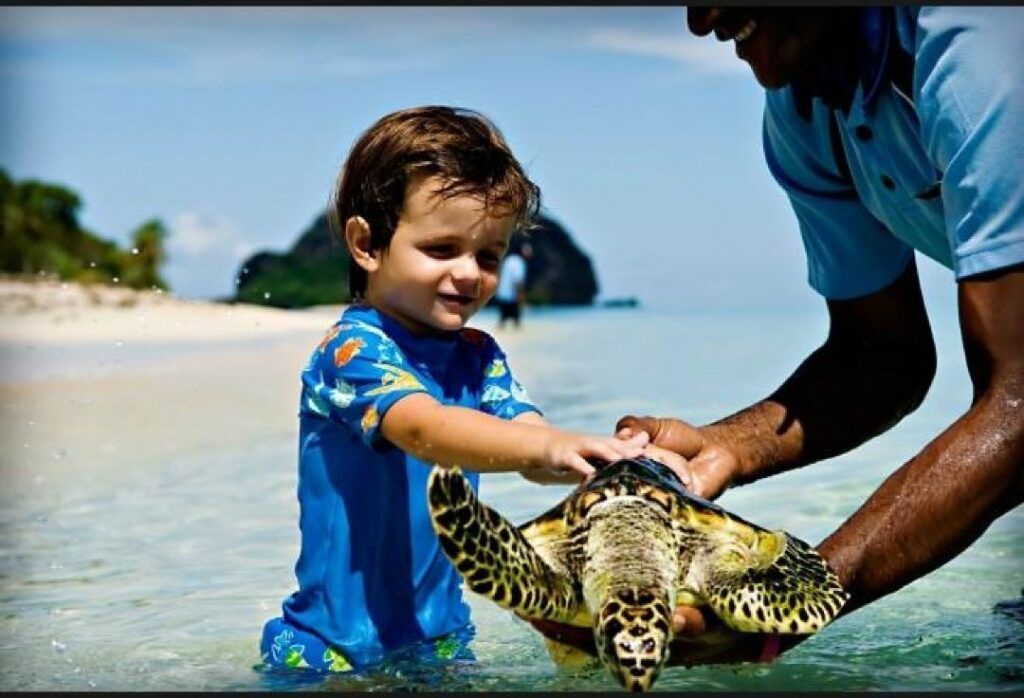 © VOMO Island Resort
© VOMO Island Resort8. Makogai Island (Lomaiviti Islands)
Once a leper colony, Makogai Island in the Lomaiviti Islands has transformed into a hub for marine conservation efforts. The island now boasts a giant clam nursery and serves as a sanctuary for turtles, showcasing Fiji’s commitment to preserving its rich marine biodiversity. Marine biologists from the University of the South Pacific are often stationed on Makogai (pronounced “Mak-on-guy”), conducting research and overseeing conservation projects. If you’re lucky enough to have your own yacht, Makogai offers excellent anchorage (we’re a bit jealous, to be honest!). It’s one of the few ways to visit this secluded gem, so sailors should definitely add it to their itinerary – see The Sailing Guide to Fiji for more details.
Location: Makogai, Lomaiviti Islands.
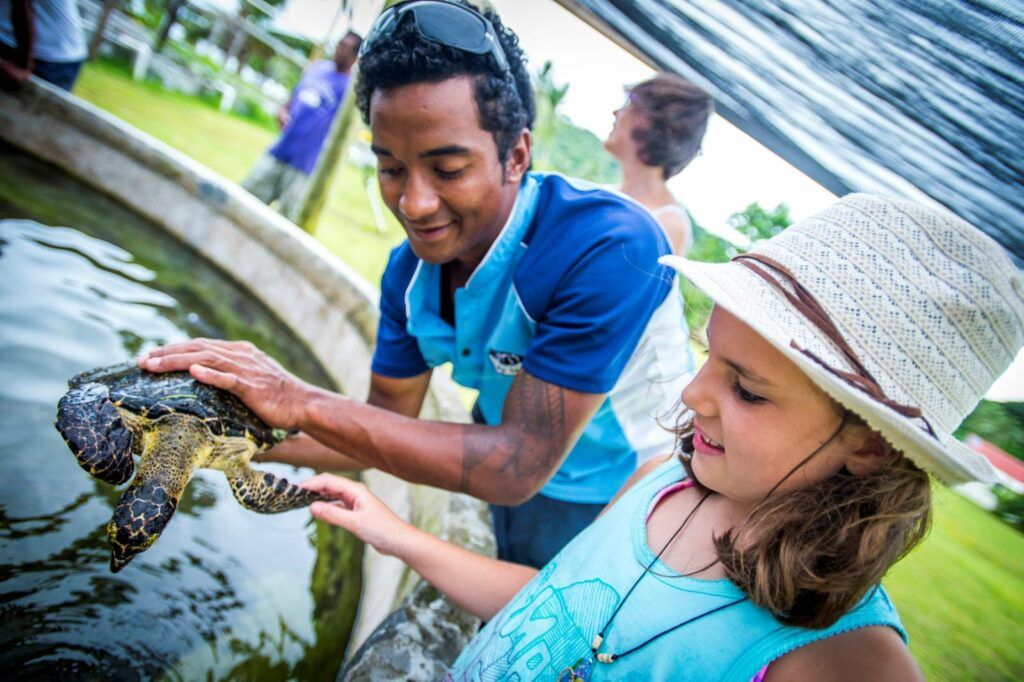 © Captain Cook Cruises
© Captain Cook Cruises9. Mana Island Resort (Mamanuca Islands)
Our final Mamanuca resort with a turtle breeding program is Mana Island Resort. Turtles are raised in pools here until they are big enough to fend for themselves in the wild. The turtle pond has grown in size over the years to accommodate the successful breeding program here. Both day-trippers and guests of the resort can interact with the turtles.
Location: Mana Island, the western region of the Mamanuca Islands. Day trips are available with South Sea Cruises.
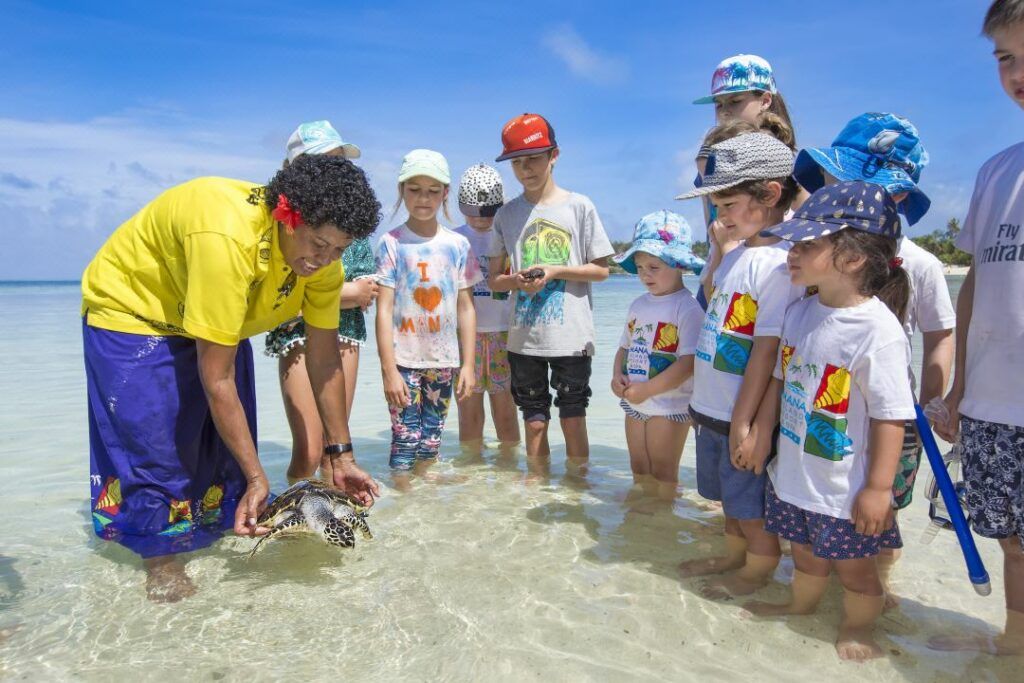 © Mana Island Resort
© Mana Island Resort10. Small Corner 1 & 2 (Kadavu)
If you’re on the hunt for Fiji’s best-kept secret for turtle spotting, look no further than Small Corner 1 & 2. We’ve already sung the praises of Matava Eco Adventure Lodge, but these adjacent dive sites deserve a special mention for their reptilian residents. As you descend into these underwater havens, you’ll find yourself gliding over sloping reefs that give way to fascinating ridges – the perfect playground for our shelled friends! Keep your eyes peeled because graceful turtles are the stars of the show here. They’re such regular visitors, you might start to wonder if they’ve got season tickets! As we mentioned before, we recommend booking your dive with Matava Eco Adventure Lodge. They know these turtle hotspots like the back of their flippers!
Location: South coast of Kadavu, Kadavu, Southern Fiji. Accessible via Matava Eco Adventure Lodge.
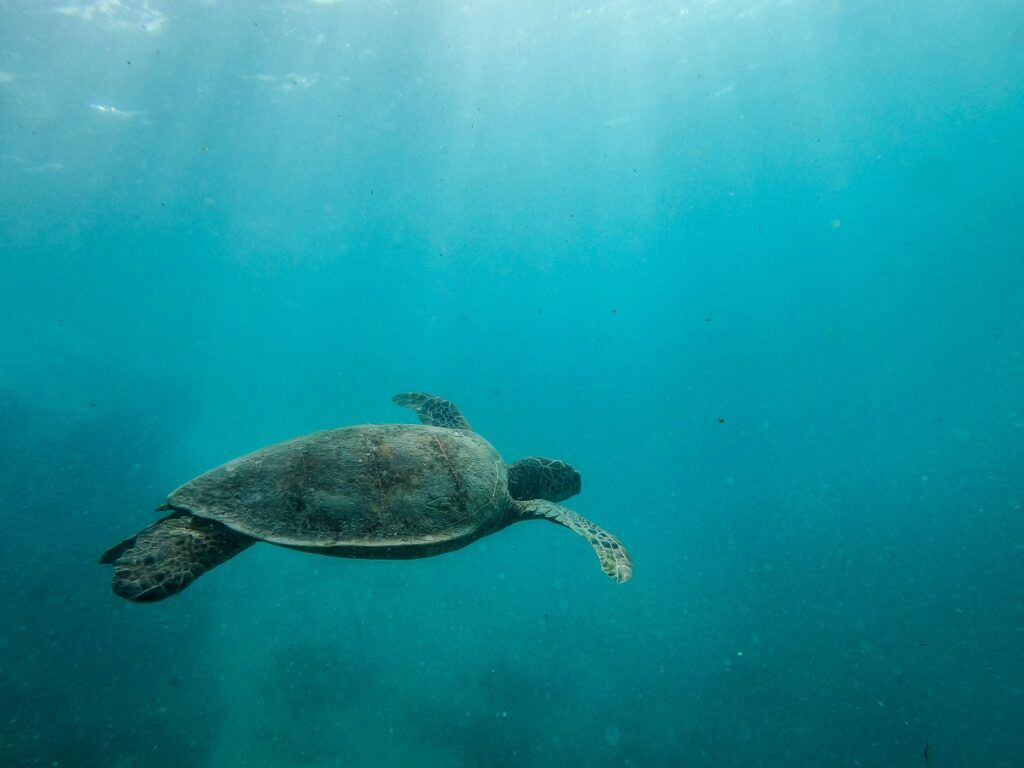 © FijiPocketGuide.com
© FijiPocketGuide.comMore About Wildlife and Turtles in Fiji
That’s it for the best places to see and swim with turtles in Fiji. For more wildlife wishlists, take a look at the following:
- 5 Best Places to See Sharks in Fiji
- The Guide to Swimming with Manta Rays in Fiji
- 10 Best Places to See Birds in Fiji
Finally, see more amazing experiences in the 101 Things to Do in Fiji. Plus, get even more tips from The Complete Travel Guide to Fiji.
Sources:
The information in this guide has been compiled from our extensive research, travel and experiences across Fiji and the South Pacific, accumulated over more than a decade of numerous visits to each destination. Additional sources for this guide include the following:
- Tourism Fiji (General travel advice - Updated [2025])
- Fiji Hotel and Tourism Association (Tourism trade association - Updated [2025])
- SPTO (Pacific tourism advice - Updated [2025])
- Ministry of Tourism and Civil Aviation (Tourism statistics - Updated [2025])
- Land Transport Authority (Road safety advice - Updated [2025])
- Fiji Immigration (Visa and immigration advice - Updated [2025])
- Fiji Revenue & Customs Service (Customs and visitor taxes - Updated [2025])
- Biosecurity Authority of Fiji (Biosecurity advice - Updated [2025])
- Fiji Meteorological Service (Weather forecast and warnings - Updated [2025])
- Fiji Bureau of Statistics (Statistics and travel data - Updated [2025])
- Safe Travel (New Zealand travel advisory for Fiji - Updated [2025])
- Smart Traveller (Australia travel advisory for Fiji - Updated [2025])
- Travel.State.Gov (U.S. travel advisory for Fiji - Updated [2025])
Our editorial standards: At Fiji Pocket Guide, we uphold strict editorial standards to ensure accurate and quality content.

About The Author
Robin (Ruveni) C.
This article was reviewed and published by Robin, the co-founder of Fiji Pocket Guide. He has lived, worked and travelled across 16 different countries before settling in the South Pacific, so he knows a thing or two about planning the perfect trip in this corner of the world. Robin is also the co-founder of several other South Pacific travel guides and is a regular host of webinars with the South Pacific Tourism Organisation.
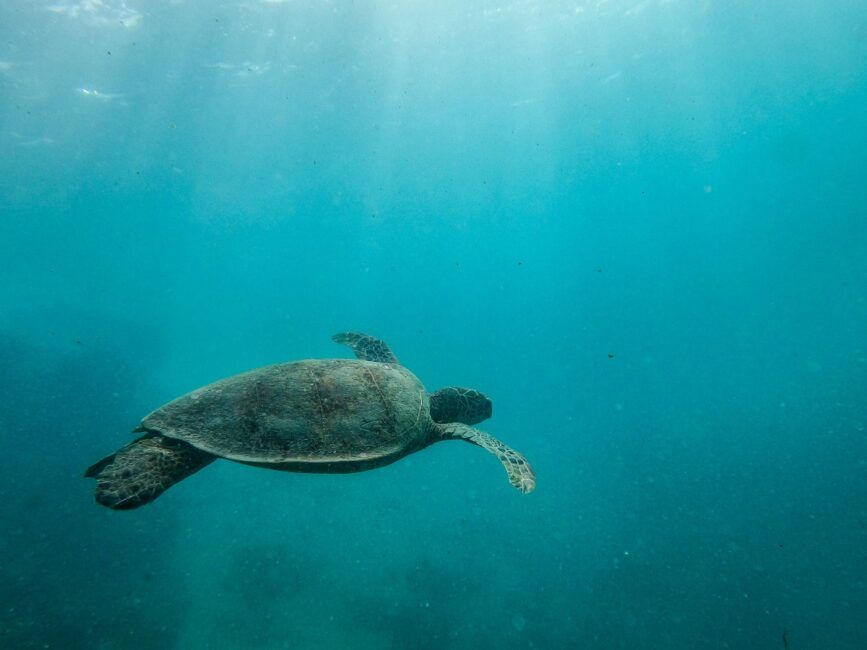



![How to Get to the Sawa-i-Lau Caves in Fiji 🦇 [2025]](https://fijipocketguide.com/wp-content/uploads/2024/09/Sawa-i-Lau-Cave-Couple-Hero-CREDIT-FijiPocketGuide.com--900x602.jpg)
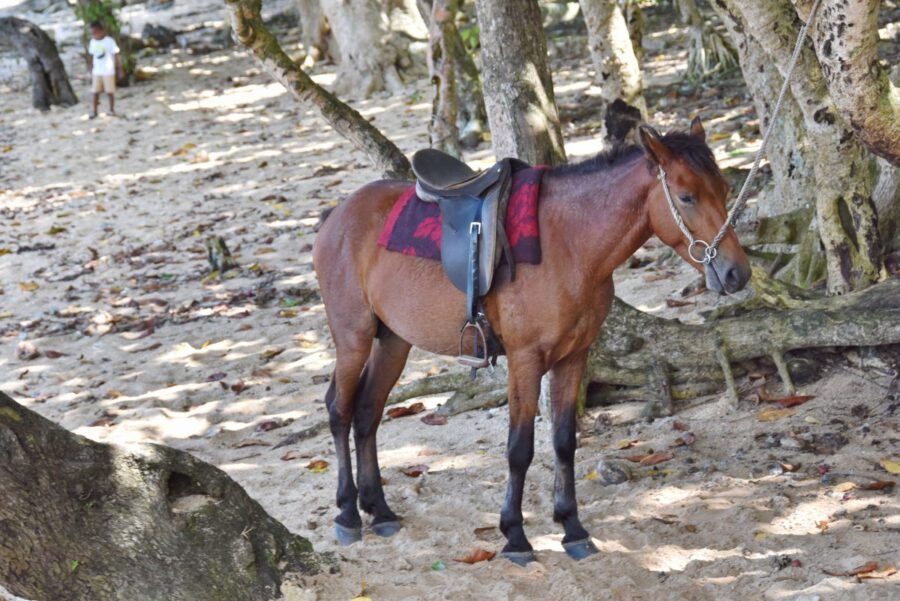
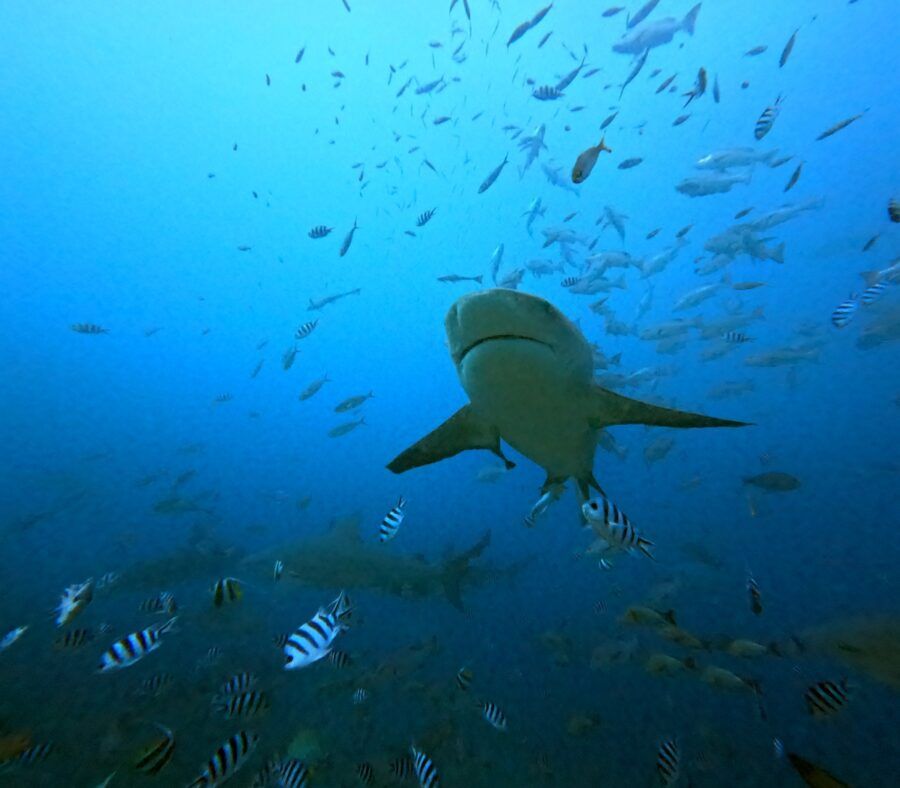

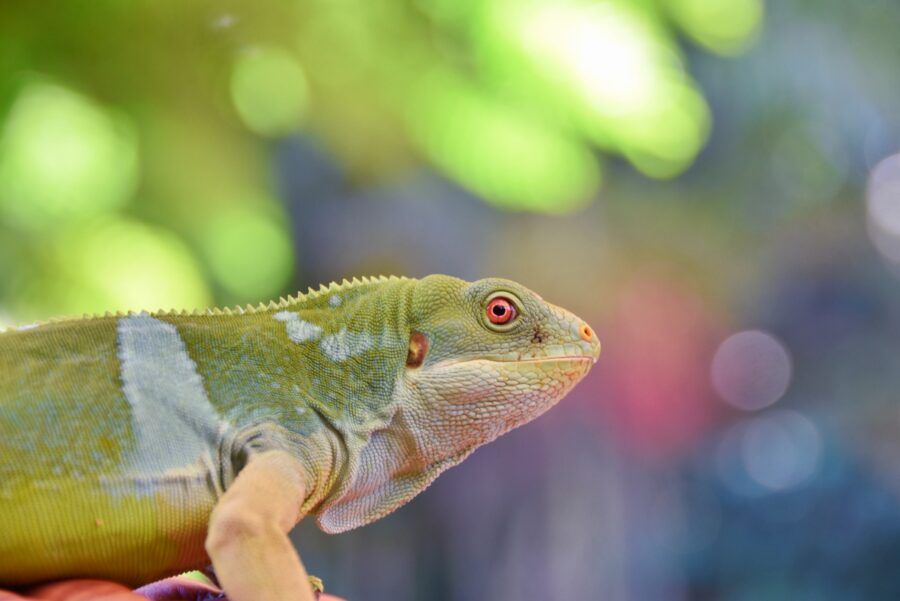
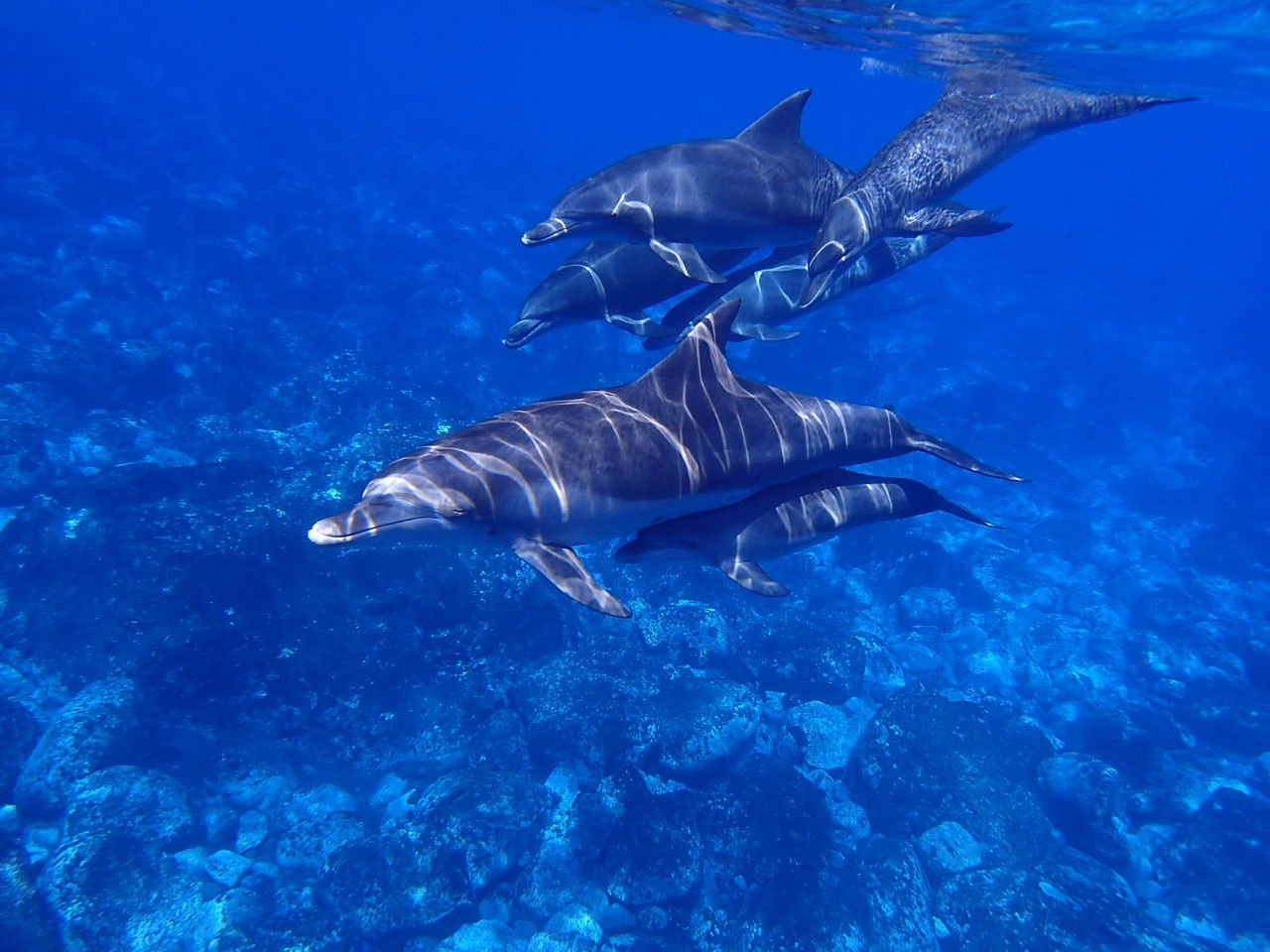
![20 BEST Waterfalls in Fiji 🏞️ [2025]](https://fijipocketguide.com/wp-content/uploads/2024/09/Bouma-Tavoro-Waterfall-Couple-CREDIT-Fiji-Pocket-Guide-1-1-900x601.jpg)